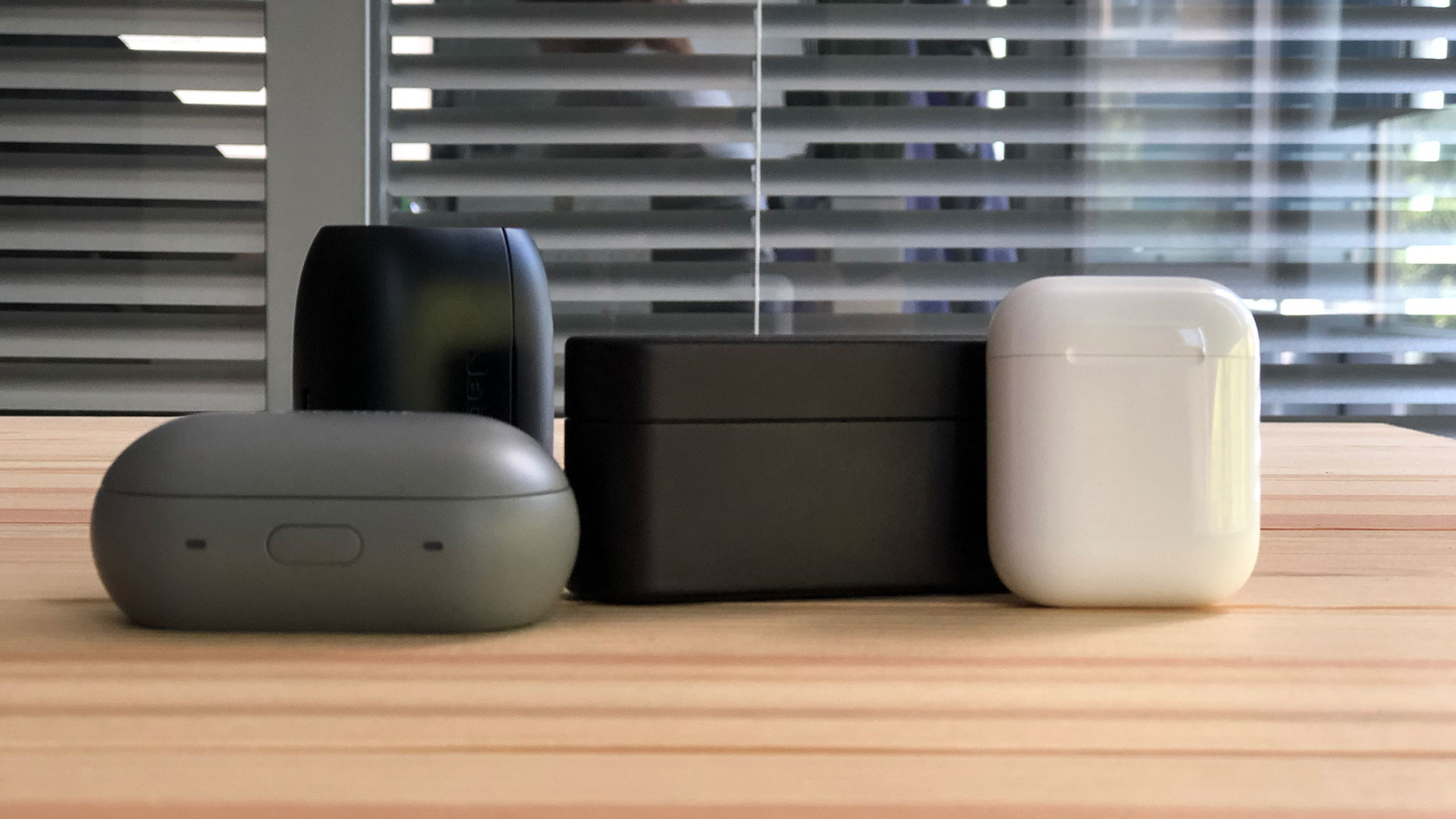https://habr.com/en/post/441316/- Gadgets
- Wireless technologies
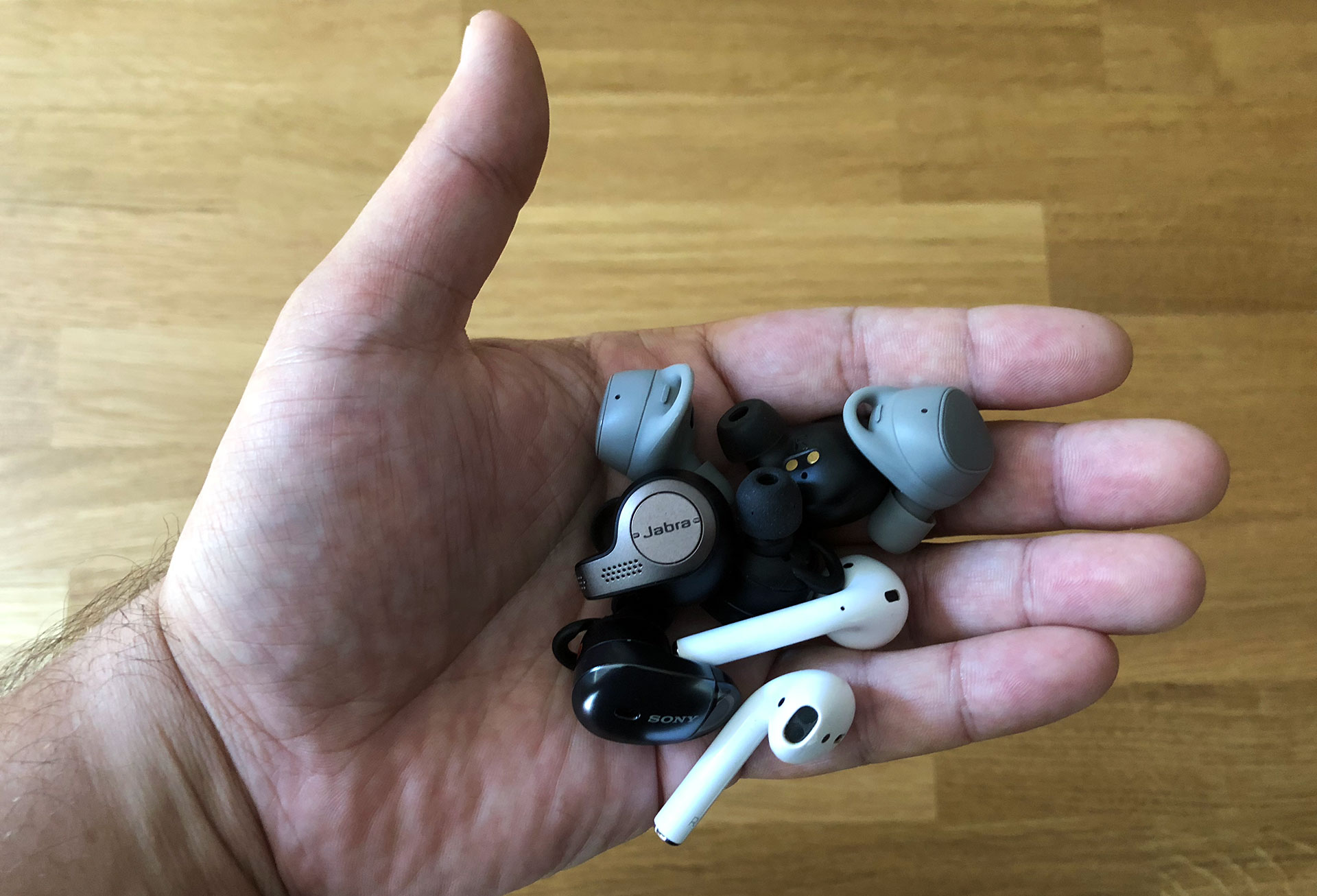
Once I put on true wireless headphones and all the cables after that (even if it's a flexible headband on a “wireless” headset), became annoying. So I’ve tried a lot of AirPods-like earbuds in order to find the best ones. In 2018 aside from the AirPods themselves I tried: Jabra Elite 65+, Samsung IconX 2018 and Sony WF-1000X. The result was a neat table with all the objective data. Everything else — my personal opinion — let's discuss in the comments.
First, I have to admit that both Apple and Samsung are really good at advertising: most of the people I know think wireless earbuds first came out from one of these brands. In reality, a couple of companies have introduced these to the market at CES 2015: FreeWavz, Bragi and HearNotes. All of these “pioneers” have predictably failed. Next year, in July, Samsung released its own “true wireless headphones” — Gear Icon X, and that didn’t take off either. And then in 2016 Apple’s marketing machine kicked into gear and the floodgates opened. AirPods, being popular by themselves, also dragged the whole market into prominence. Now, during my Moscow morning commute, I often notice about 10 people with these recognizable white earbuds, and a couple more with one of the contenders.
In 2018, there was a lot to choose from. Aside from the four I mentioned above, there were others in different price ranges: B&O E8 (approx. $200 in February 2019), JBL Free (approx. $140), crowd-funded TicPods (approx. $230), Onkyo W800BT (approx. $200) and Bose SoundSport Free (approx. $200). Along with them, Meizu doesn’t stop lowballing (Pop TW50 for just $90) and Huawei also showed their take on the idea (FreeBuds for $100). And while I was testing the Sony model their new one came out (WF-SP900 for $260). All in all, there’s a lot of room for further experiments, but let’s for now stick with those I tested myself.
| |
Apple
AirPods |
Samsung
IconX 2018 |
Sony
WF-1000X |
Jabra
Elite 65t |
| |
 |
 |
 |
 |
| Color |
 |
   |
  |
 |
Total
battery time |
~30 h. |
15 h. |
8 h. |
~24 h. |
| From one charge |
~5,5 h. |
5 h. |
2 h. |
6 h. |
| Charges from the case |
4,5 |
2 |
3 |
3 |
Quick
charge |
10 min. → ~1 h. of work |
no |
10 min. →
~1 h. work |
| Interface |
Lightning |
USB Type-C |
micro-USB |
micro-USB |
Touch
control |
yes |
no (buttons only) |
| Gesture control |
no |
yes |
no |
Quick
connect |
iPhone only |
no |
| Bluetooth |
4.х |
4.2 |
4.1 |
5.0 |
| Water resistance |
no |
no data |
no data |
IP-55 |
Weight
(grams) |
4 |
8 |
6.8 |
6.5 — left,
5.8 — right |
Case weight
(grams) |
38 |
54.5 |
100 |
67 |
| Frequency |
no data |
20 Hz – 20 kHz |
| Official price |
$159 |
$179.99 |
$199.99 |
$169.99 |
Sound
I won’t even try to describe how these four sound. They all sound
fine. Good. Decent. It’s still Bluetooth, after all. These are not audiophile high-end devices.
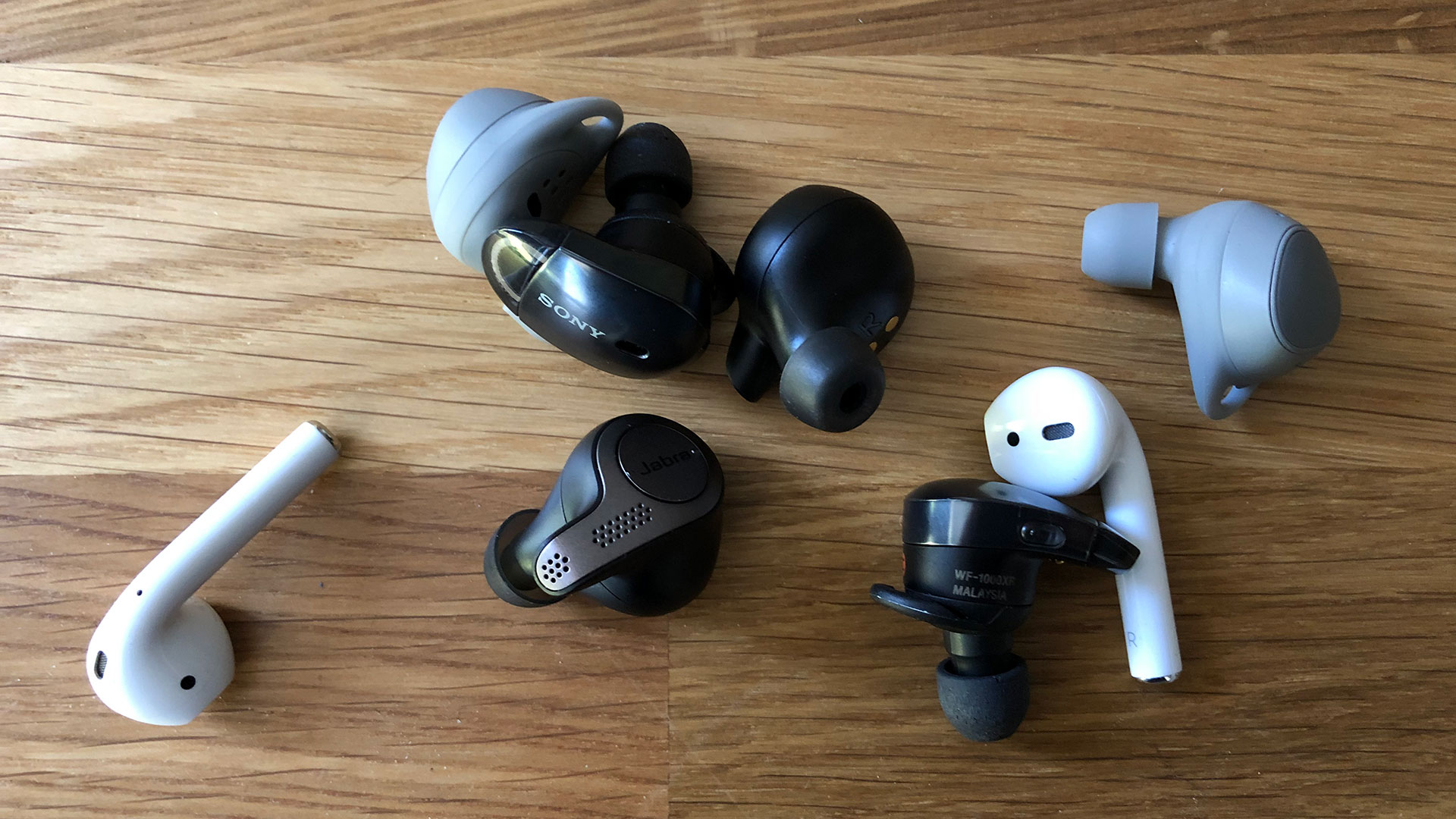
Noise cancellation, though, is worth mentioning. Jabra, Samsung and Sony are so called in-ear canalphones, while Apple AirPods are earbuds. They don’t stick as tightly and there’s a bit of noise bleeding through from outside. Even at max volume I often have to turn on subtitles on YouTube to recognise what Joe Rogan is saying.
Jabra goes as far as active noise cancelling, so virtually no noise is bleeding through. In addition, the Sound+ app has the HearThrough mode, which allows outside sounds to go through. There’s more than enough volume for anything.
Sony has incredible passive noise insulation thanks to foam-based buds. WF-1000X go very deep into the ear, where the bud expands a little. But even though it claims active noise cancelling as well, I didn’t notice it, so I turned it off entirely.
Samsung IcoX has… decent noise insulation, and I never had to turn the volume up to eleven. They also have the mode for allowing outside noise through the microphones, like the Jabra. But it only works where the earphones are connected through to an Android phone with the Samsung Wearables app, when these settings can be enabled.
Do they fall out?
I haven’t had a single one of the four fall out. I went to gym with them, rode a bike, purposefully tried to shake my head — they stayed on. But apparently, not all people have the same experience. I gave them to my friends for a review and there wasn’t any discernible pattern: some had them fall out, some didn't. Some reported that Jabra and Apple are very firm, while others fell out. For some, only Sony stayed in, for some — only Samsung. And that’s even though Samsung and Sony have little protrusions to keep it in the ear, while Jabra doesn’t. My advice, then: try them on before buying any.
There’s also a question of multi-hour comfort. I personally get tired a little from canalphones: ears start to itch and I feel a need to, um, “ventilate” them. But it’s not because they’re wireless: I have the same issue with wired in-ear phones.
First connection
Apple tried to make the process of pairing as user-friendly as possible. If you have an iPhone, then AirPods connect within a couple of seconds: you open the case lid, the phone asks you to hold a button on the case, two seconds — done.
Android doesn’t work that way: you need to first hold a button on the case, and then you need to find them in the Bluetooth menu, like with any other audio device.
Samsung apparently tried to make it connect to their Galaxy phones the same way, but it seems to apply to other models as well. Samsung Wearables app says for the IconX 2018: press and hold the Bluetooth button on the case, then the headset icon appears within the app, tap it and it connects.
Sony and Jabra require them to be put into discovery mode for first connection. For that, both models have mechanical buttons you need to hold and wait for the blue LED to start flashing.
Overall, if you want to use the manufacturer’s software, pair through them first instead of just searching for the earphones through the standard Bluetooth menu. Otherwise it’ll ask to pair again anyway.
Controls
Two models have touch controls only — AirPods and the IconX. Apple made it quite simple: double tapping one earpiece plays/pauses. Double tapping another one either skips to the next track or wakes up Siri. That’s it.
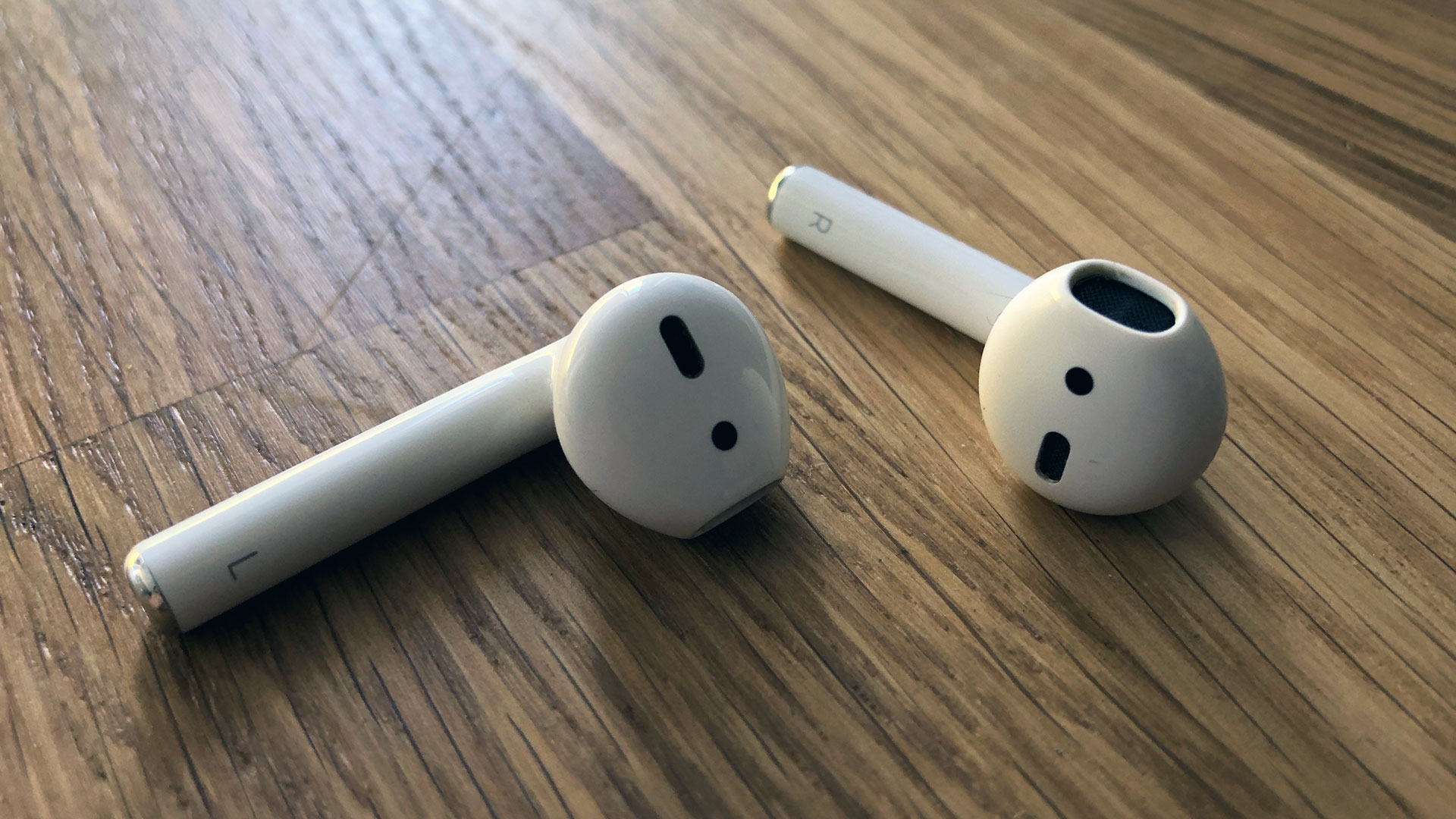
Samsung has a lot of gestures, and they work identically for both earpieces. On one hand, it’s hard to remember them all, on the other — it’s cool you can even change the volume without touching the phone.
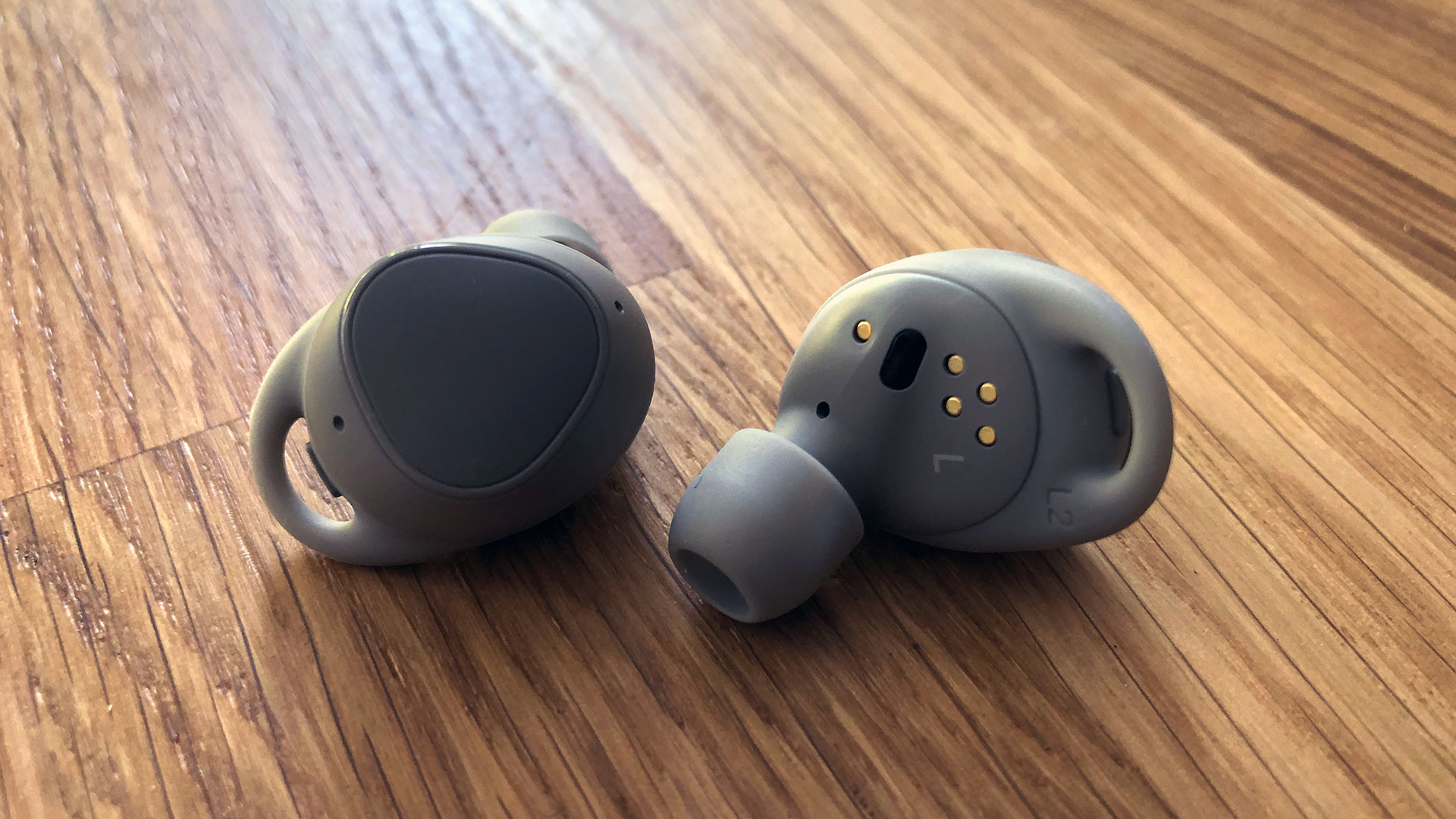
Sony made everything work with little buttons instead of sensors. The right earpiece allows you to press it one, two, or three times. The track will pause, skip forward or backward respectively. The same button on the left earpiece controls the Ambient Sound mode, when microphones capture outside noises and output them through the speakers. By the way, it’s the only set of the four that doesn’t auto-pause when you take it out of an ear.
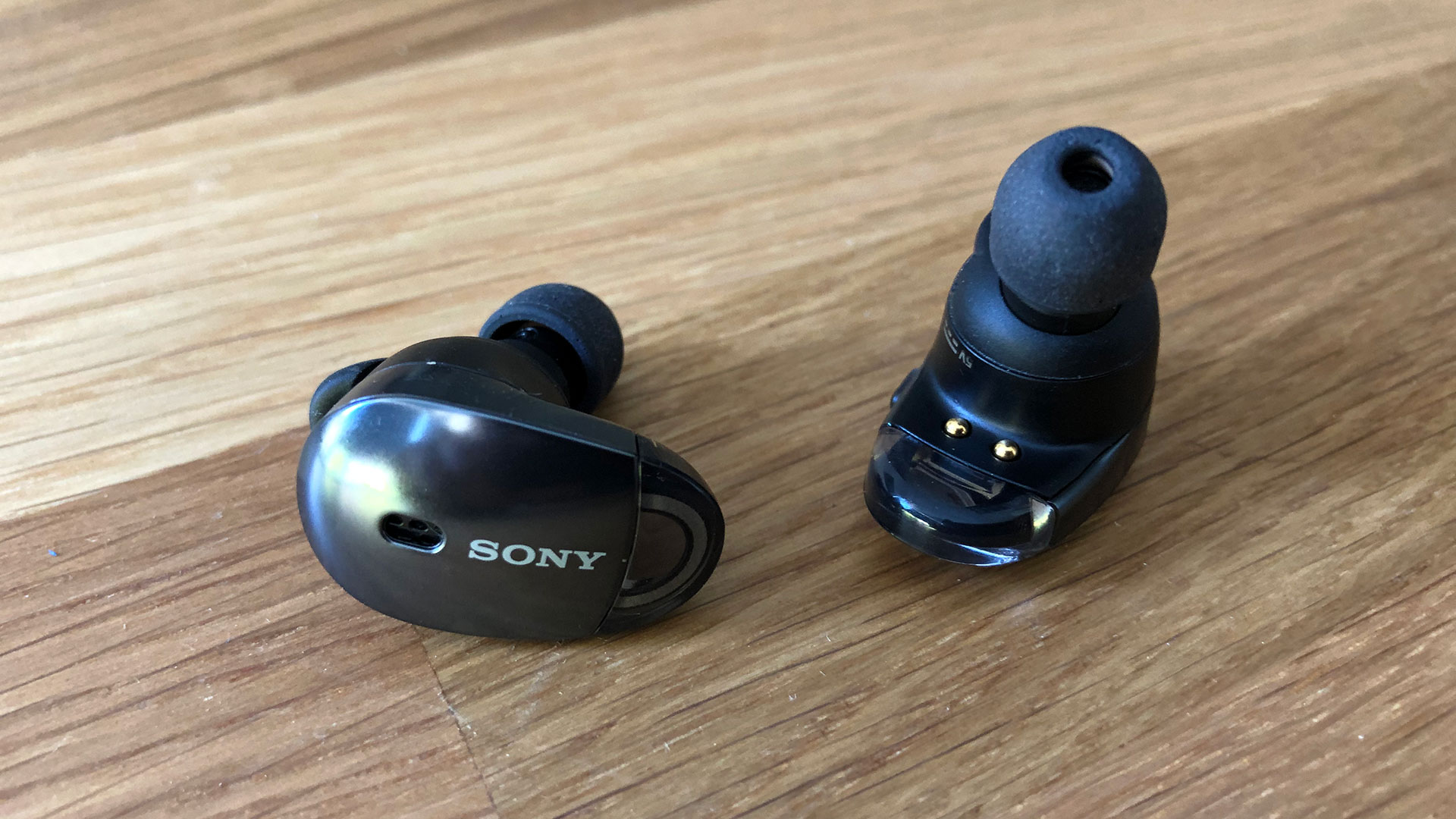
Jabra also has mechanical buttons, but they’re placed on the side instead of the bottom. The buttons are quite stiff, so every time you need to skip track or change the volume, the earbud goes just a little bit deeper into the ear, which isn’t very comfortable.
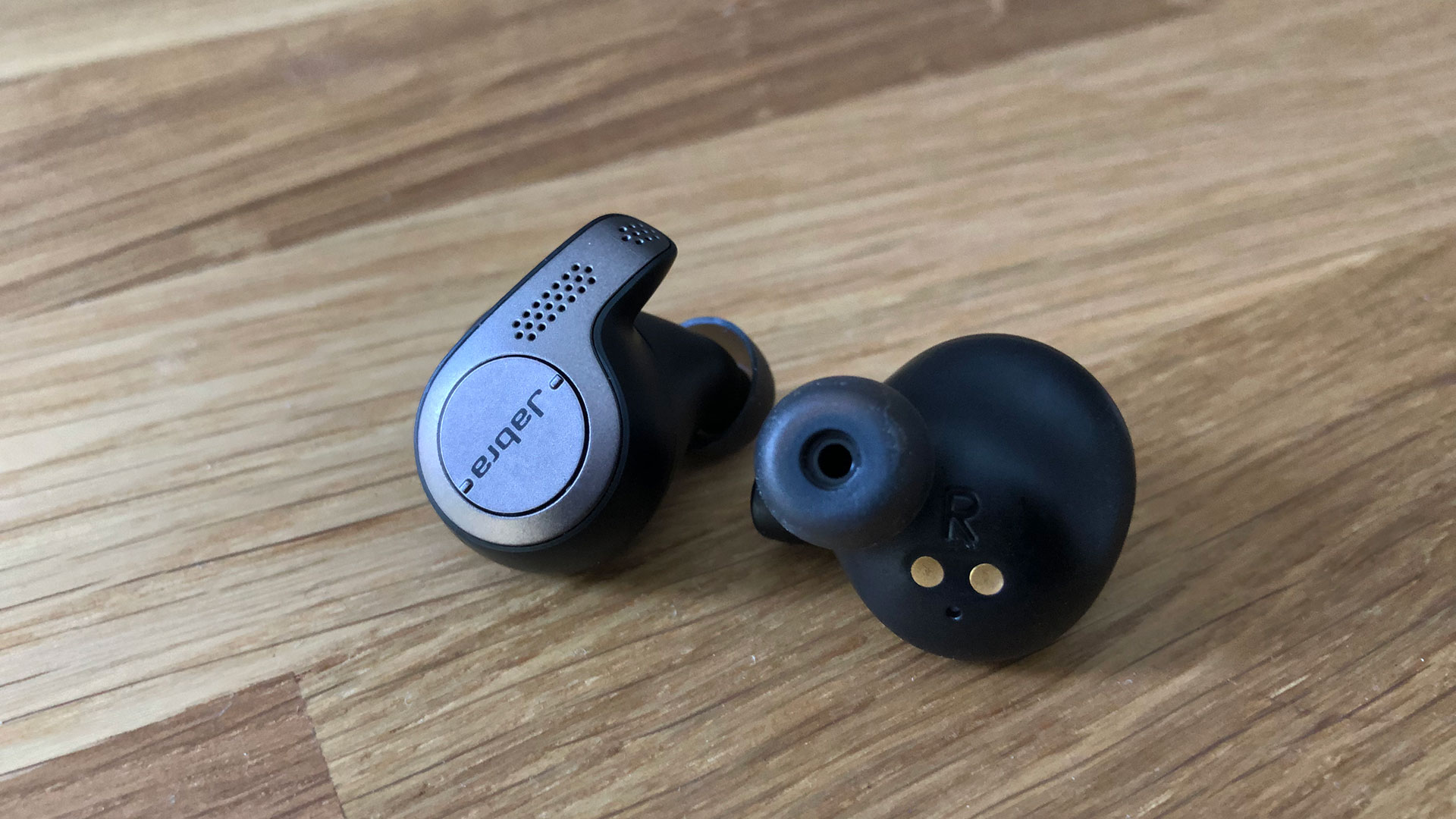
Cases
All the cases, to be honest, are very plain. Take a guess which is which with logos Photoshopped out?
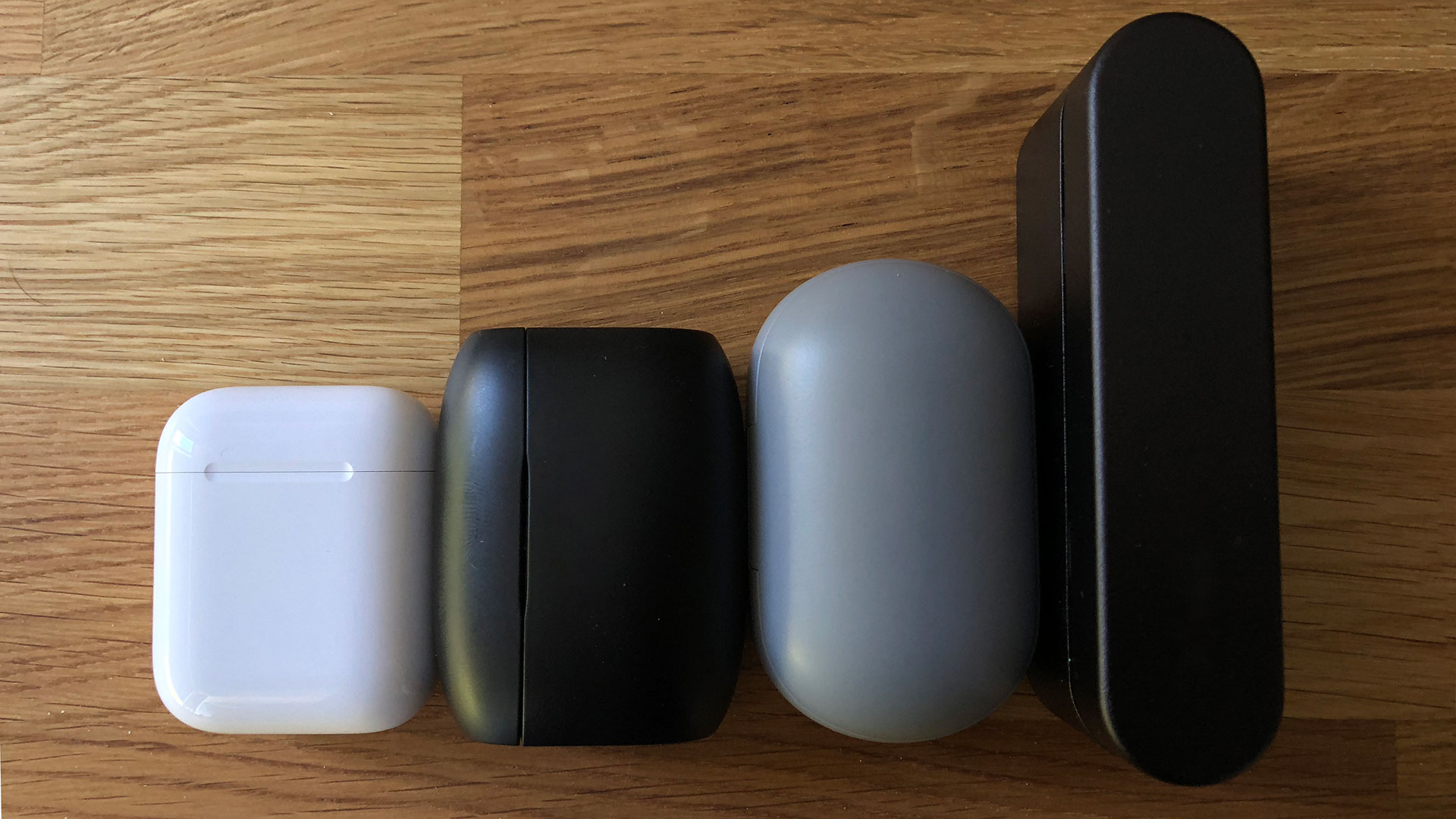
They all serve the same purpose — charging and storing the earpieces when they aren’t used. And even though they’re built differently, they all have the same problem — you often put the earpieces into wrong slots. Theoretically, you’re supposed to place them the way they come out of your ears, but in practice few I know do that.
Apple has the lightest and smallest case — just 38 grams. It fits into a tiny jeans pocket perfectly. The magnetic lid opens and closes smoothly, and the earpieces themselves are also held with magnets. They’re almost “sucked” into their slots when you place them for charging.
The Samsung case isn’t way much larger, so it’s also put into the same pocket. It’s slightly heavier — 54.5 grams — but it’s barely noticeable. But the lid only opens when pressing a mechanical button. It’s slightly inconvenient, but at least it won’t open when you drop it on the floor. Earpieces are also magnetically held in place.
The Jabra case is also quite small, but a bit heavier — 67 grams. The lid closes firmly with a mechanical latch. Slots for earpieces are a bit deeper than on Samsung, but they’re not really held in place. If charging contacts didn’t match, you have to open it again and adjust them.
Sony has the largest case and it’s not really convenient to carry in your pocket (though they did make the case smaller in the next version). 100 grams, and the lid has powerful latches. And just to be sure the earpieces don’t fall out, you need to push them into the sockets until they click — and only then they start to charge.
Battery life
Battery time doesn’t only depends on the earpieces’ own batteries, but those in the case as well. While the earpieces are in the case, they’re charging, and they’re almost certainly at 100% again when you want to use them. Every case except Sony takes 10–15 minutes to ensure an hour of work.
Amazingly, but the most effective battery is in the smallest case. The Apple case can fully charge the earpieces 4 times for a total of about 30 hours of work. Jabra is next with about a day of autonomous work. Samsung IconX 2018 handles 15 hours. Sony shows the worst result — only 8 hours, and you have to charge the earpieces every two hours.
Microphones
All of them have downsides. Strong wind defeats all four mics, no matter how many advanced software features the manufacturers employ. It’s easier to pull out the phone right away, or else no one will hear you on the other end.
When it’s quiet outside, however, everything’s fine. Here’s an example of a recording (in Russian) from the iPhone’s built-in mic and then all four earphone mics in order, with a hairdryer at full blast in front of me.
My choice
I primarily use an iPhone, so I would choose the AirPods despite the less-than-perfect sound. They’re simply the easiest to use: you open the case, put the earpieces in and everything works. With other models connection isn’t always instant, and sometimes Bluetooth drops entirely.
But I would still choose Jabra Elite 65t as the backup pair. I felt like they have the richest sound, and, since it’s an in-ear phones, noise isolation is great. They’re also second in battery time.
The other two I put on the shelf — just in case I loose one of the primary two. And, even though I’ve used these for half a year at this point, I’m still always afraid of losing them.
